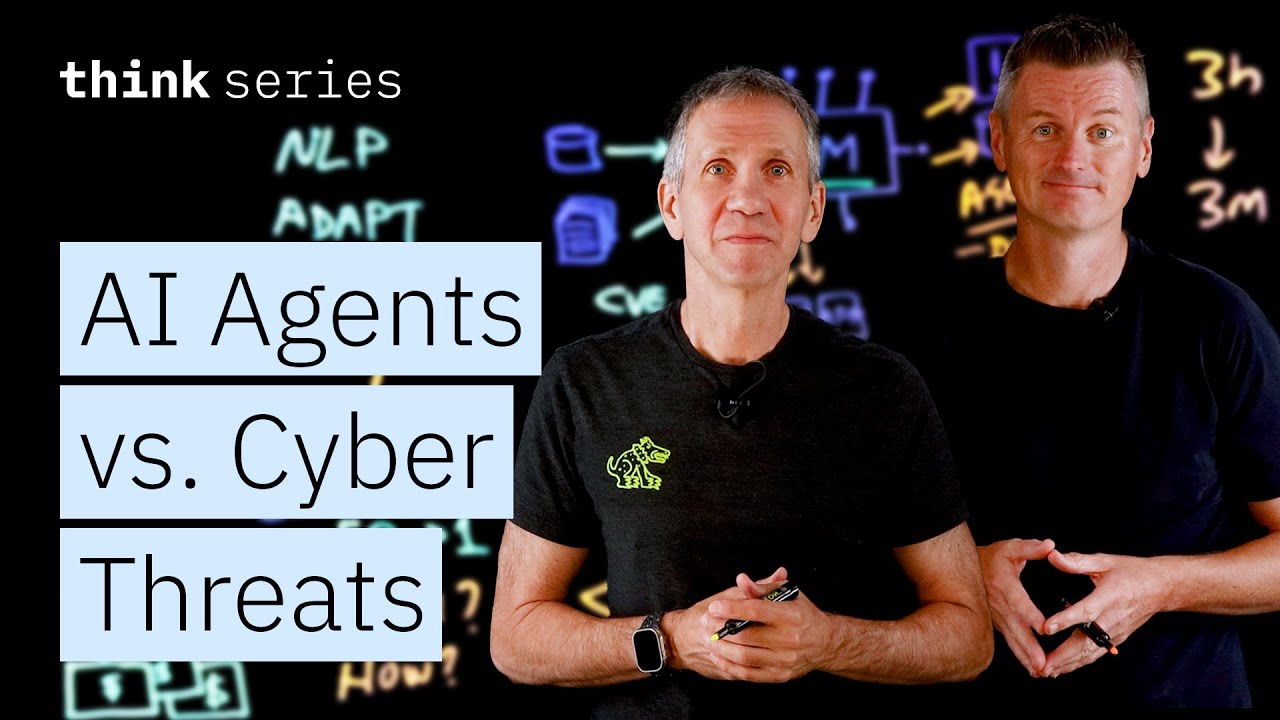The video highlights how AI agents powered by large language models enhance cybersecurity by autonomously analyzing diverse data, improving threat detection, and automating incident response while augmenting human analysts amid a significant workforce shortage. Despite challenges like hallucinations and adversarial risks, these AI agents, when combined with human oversight and strict safeguards, offer a dynamic and adaptive approach to combating evolving cyber threats more effectively than traditional tools.
The video discusses the growing challenges in cybersecurity due to increasing data volumes and a significant shortage of cybersecurity professionals, with an estimated 500,000 open jobs in the US alone. Traditional cybersecurity tools rely on static rules and narrow machine learning models, which struggle to keep pace with evolving threats. In contrast, AI agents powered by large language models (LLMs) offer dynamic, adaptive capabilities that can think, act, and reason within defined boundaries, augmenting human analysts rather than replacing them.
AI agents differ from traditional workflows by autonomously interpreting both structured and unstructured data, such as logs, reports, and advisories, to make real-time decisions. They can interact with various tools and databases, adjusting security workflows on the fly, much like a human analyst would. This adaptability is crucial in cybersecurity, where attackers constantly change tactics, and AI agents can handle unexpected or cleverly disguised attacks more effectively than rigid scripts or single-purpose models.
In practical applications, AI agents enhance threat detection by analyzing raw event data and alerts in natural language, often identifying malicious activity more accurately than traditional methods. They assist in triaging alerts, reducing noise by grouping related incidents, and providing faster incident response by correlating information from multiple sources. AI agents also improve phishing detection through semantic analysis, analyze malware code by explaining it in natural language, and support vulnerability and risk management, among other tasks.
Despite their advantages, AI agents come with limitations and risks, such as hallucinations where they produce incorrect or fabricated information, and vulnerabilities to adversarial manipulation like prompt injections. To mitigate these risks, it is essential to implement strict guardrails, limit autonomous actions to low-risk scenarios, and maintain human oversight for critical decisions. Continuous feedback and reinforcement learning help improve AI precision, but a culture of healthy skepticism and human-in-the-loop processes remain vital to avoid overreliance on AI outputs.
Ultimately, the video envisions a cybersecurity ecosystem where AI agents collect and enrich data from multiple sources, correlate and prioritize threats, and recommend responses, thereby automating much of the manual research traditionally done by analysts. These agents augment human capabilities, enabling faster and more effective threat detection and response. Given the ongoing shortage of cybersecurity professionals, AI agents are poised to play an increasingly important role in strengthening organizational defenses against cyber threats.
